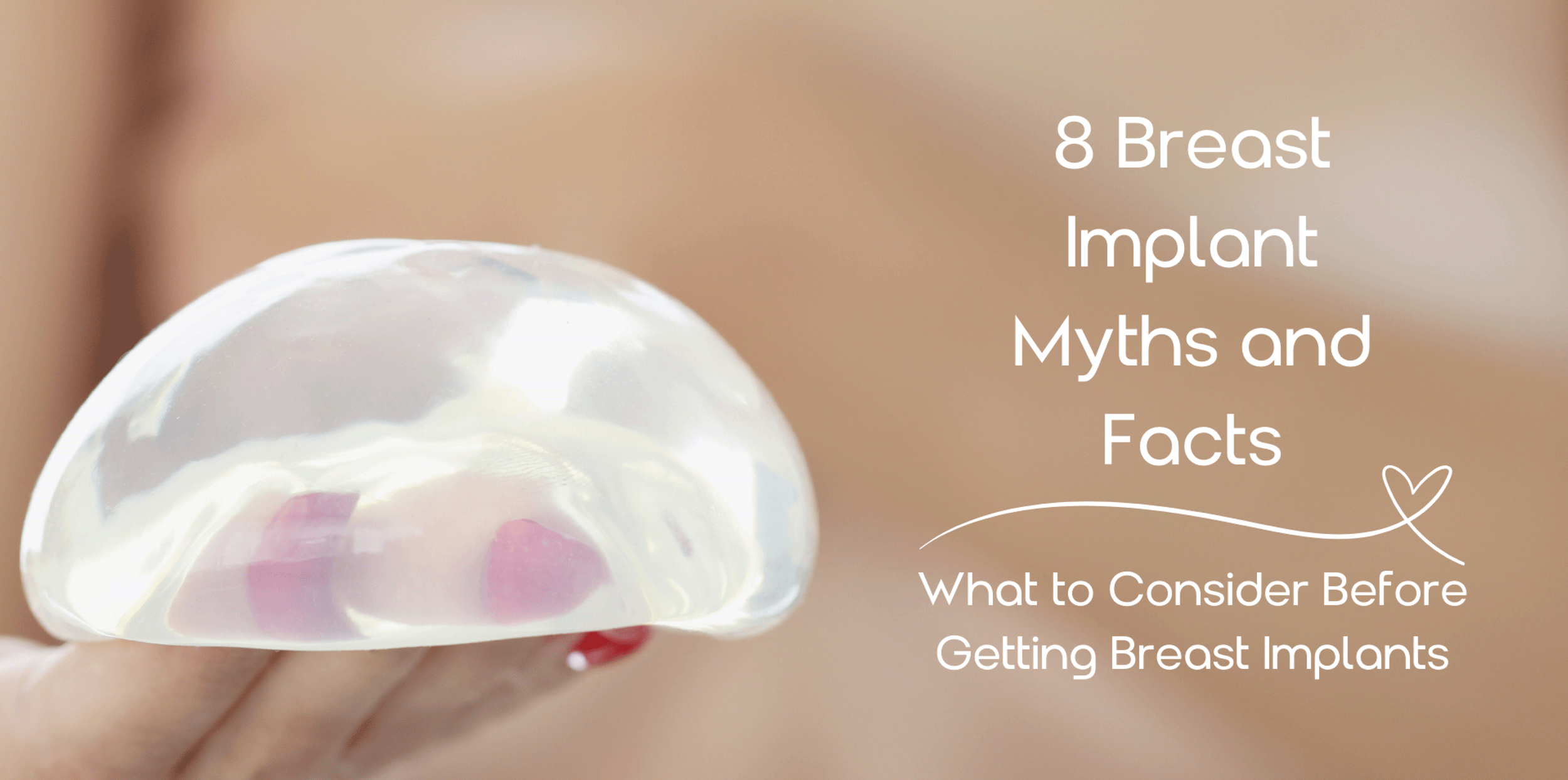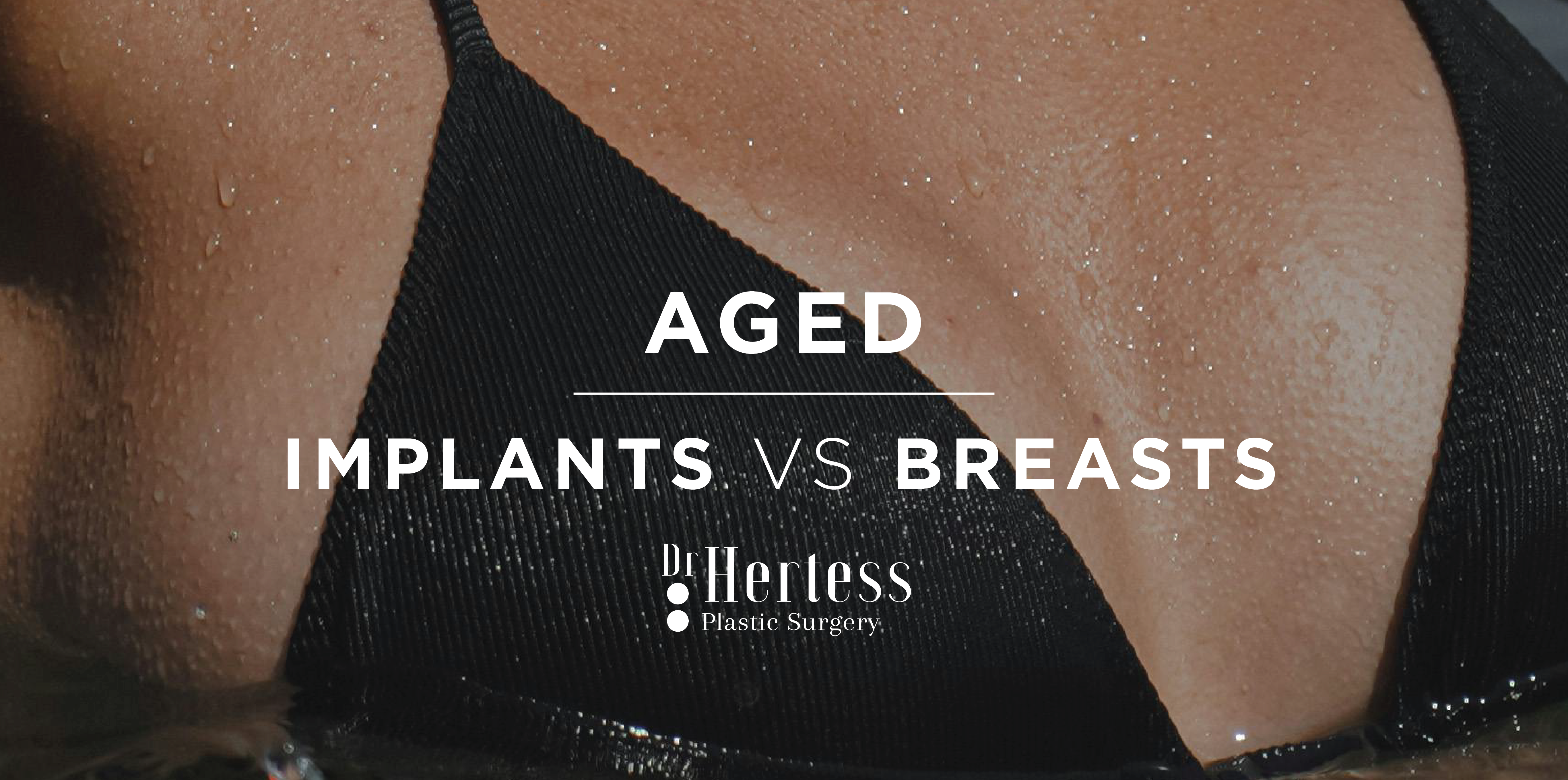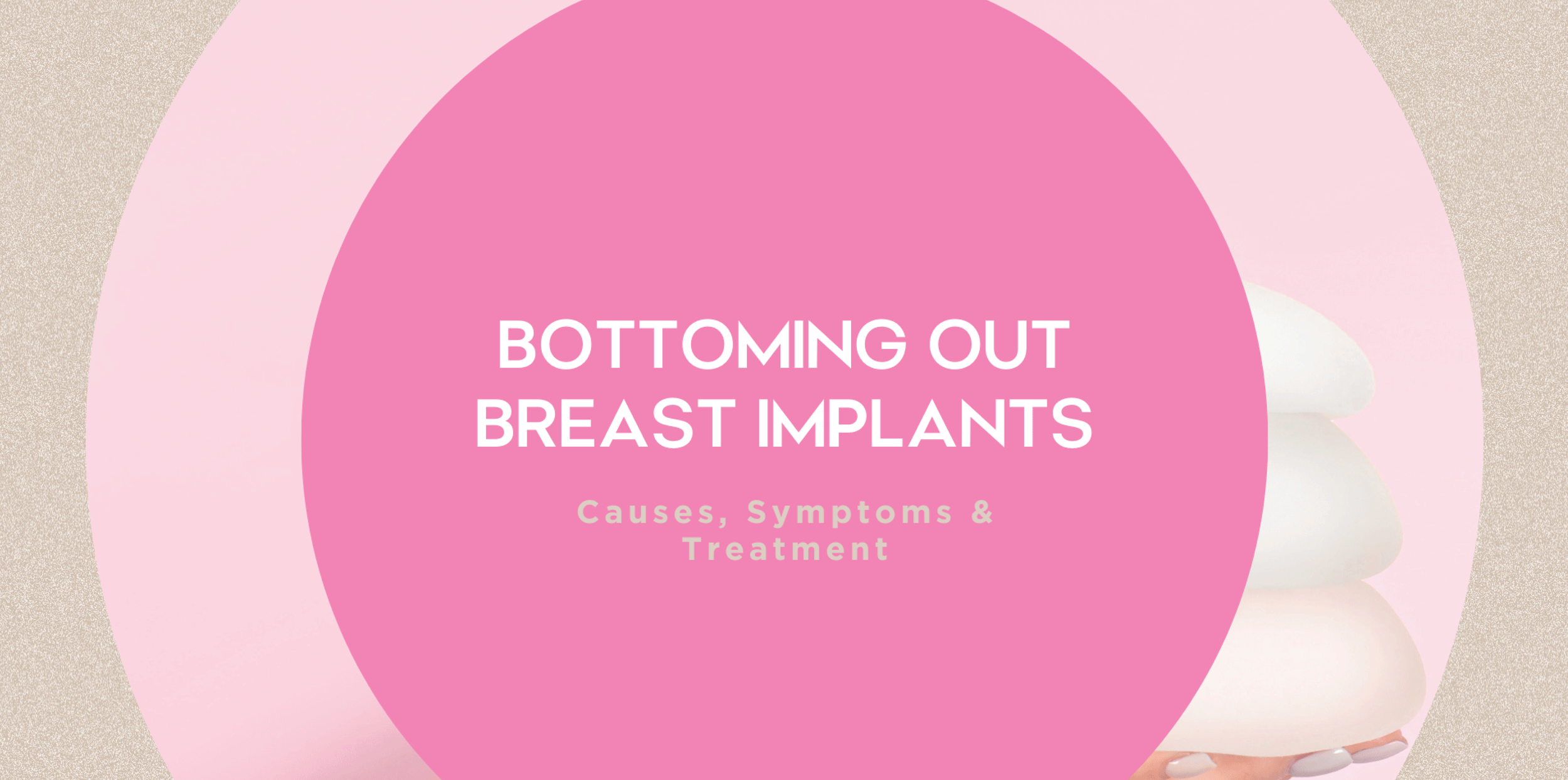8 Breast Implant Myths and Facts: What to Consider Before Getting Breast Implants

When considering breast implants, it's crucial to separate myth from fact to make an informed decision about your body and well-being.
As a Specialist Plastic Surgeon with years of expertise in breast implants and revision breast surgery, Dr Hertess understands the questions that come up before undergoing breast augmentation. Common queries such as "What I wish I knew before getting breast implants?" and concerns about "Who shouldn't get breast implants?" are topics surrounded by myths and misinformation.
The purpose of this article is to clarify and make you aware of the truths and facts of breast augmentation surgery. By reading this article, you'll understand how breast implants work and the potential risks and complications of the surgery. This will enable you to make an educated and confident decision about your body and well-being.
Image 1: Dr Hertess, Specialist Plastic Surgeon with over 30 years of experience in cosmetic and medically necessary breast surgery.
Myth #1: Breast Augmentation is a Simple Procedure
Many women believe that getting breast implants is a simple procedure.
While technically, the surgery may seem simple, the process of getting breast implants can be complex:
- It's a surgical procedure performed in an accredited hospital.
- It's performed by an accredited specialist surgeon with 6+ years of advanced surgical training.
- The procedure itself involves "going under" a general anaesthetic (ie. you are put to sleep to get breast implants).
Fact: Breast implant surgery can be complex. Surgical expertise and planning are necessary to achieve your desired result.
Choosing an implant size that's best suited to your body and desires is a two-step process.
Your implants are chosen by feel and by look:
- You will "try on" an implant in a bra to feel the size and weight, and
- You will visually see the implant in your body by a computer-generated image. (3D imaging)
This process occurs over two consultations and allows you to work with Dr Hertess to choose what breast implant option is right for you.
Consideration: There are limitations and risks to various implant sizes.
For example:
- An implant that is too large may lead to increased risks such as implant displacement and bottoming out (pictured).
- An implant that is too small may lead to regret. This can cause you to desire a second operation, thus doubling your surgical risks.
Image 2: Bottoming out of the right breast implant. Implants used were Mentor Smooth Round Moderate Plus Profile 375cc. The displayed image is a real patient of Dr. Hertess.
Because this is a highly personalised experience, it's important to take time in the planning phase, ask questions and try on multiple implant sizes. This will help you achieve your desired breast size and one that is most compatible with your body.
Myth #2: All Breast Implants Look Fake
Many women believe that all breast implants look and feel fake.
The truth is, that patients often request the 'fake' look.
Fact: Breast implants can look either natural or fake depending on your chosen implant size, type and placement.
You will need to work with your surgeon to achieve your desired result.
Image 3: Breast augmentation images demonstrating “natural” (Cereform Round Medium Profile 260cc) and “fake” (Mentor Round Ultra High Profile 295cc) looking implants. The displayed images are real patients of Dr. Hertess.
Consideration: Multiple factors can create natural or fake breasts
Implant Placement - where the implant is placed in relation to the muscle
- Under-muscle or dual-plane implant placement can create a more natural look
- Over-muscle placement can create a more fake look (because you are more likely to see the outline of the breast implant).
Implant Size - the cubic volume of the breast implant
- A smaller implant that fits your frame will create a more natural-looking breast.
- A larger and wider implant will create a faker-looking breast.
Implant Projection - how far the implant 'sticks out' from the chest
- A lower-profile implant can appear more natural.
- A high or extra-high-profile implant can create a faker look.
Note: These considerations depend on how much breast tissue you have before surgery. Working closely with Dr Hertess will help you achieve your desired results.
Myth #3: Breast Implants Offer Built-in Support
Many people believe that breast implants can provide structural support to the breasts and prevent sagging. However, this is not true.
Fact: Implants add weight to the breast and require proper tissue support.
Think of the breasts like a hammock. Over time, if the supporting skin and tissue (the 'hammock') isn't strong enough and is carrying extra weight, it can lead to increased sagging. This is especially true for larger implants.
Image 4: Sagging implants over time. The displayed images are real patients of Dr. Hertess.
Consideration: Your breast tissue quality impacts your result.
Factors like age, weight, genetics, and history of breastfeeding can weaken breast tissue, affecting the degree of support after implant surgery.
To maintain the desired look of breast implants, Dr Hertess will consider the quality of your no breast tissue before choosing the size and type of implant. A breast lift may be recommended to provide additional support for a 'loose hammock'.
"If there is any doubt about the quality of the tissues, then we talk about an uplift or an internal bra. An internal bra is an absorbable mesh that is placed as support for the implant. However, this method is usually reserved for failure of an initial uplift," says Dr Hertess.
Myth #4: Breast Implants Can Correct Sagging
There's a common myth that breast augmentation will address sagging breast tissue.
Fact: Breast lift surgery is the only way to address sagging breast tissue.
The truth is that implants add volume but they don't correct sagging. To achieve your desired outcome, a breast lift may be necessary to correct sagging.
A breast lift repositions the nipple and tightens the breast tissue around the implant, so it's snug rather than loose over the top of a breast implant.
Consideration: Breast lift and implant surgery can be done as a single surgery.
"Some surgeons perform an augmentation or lift first, in a two-stage procedure. I perform the procedure in one stage," says Dr Hertess.
Combining breast lift and implant surgery can achieve a good result for sagging breasts.
Doing it in a single procedure is often beneficial too as it lowers the chances of risks associated with surgery.
Image 5: Breast augmentation combined with breast lift surgery (Mentor Round 325cc). The displayed image is a real patient of Dr. Hertess.
Myth #5: A Larger Implant Will Lift a Low Nipple
Some women believe that if you choose a bigger breast implant, it will help lift a nipple that's sitting a bit lower than usual. They believe the extra size from the implant will push everything up and make it look perkier. But that's not entirely true.
Fact: Breast implants only make a breast bigger, they do not change nipple position.
"The nipple, if it is low to start with, will be low after breast augmentation. A breast lift is required to make the nipple higher as it removes and tightens loose skin," says Dr Hertess.
If you have a low nipple and have breast augmentation (without an uplift), the risk is that the implant stays in position and the skin sags over the top. The breast tissue and nipple go around the mound of the implant and extend down like a waterfall. This is referred to as a waterfall breast complication.
Image 6: Waterfall breast deformity. The displayed image is a real patient of Dr. Hertess.
Consideration: Breast lift surgery is the solution to a low nipple.
For this reason, nipple position is a key consideration when deciding on implant size and whether or not a breast lift is necessary.
If your nipple sits below the inframammary crease (the line where the underside of the breasts meets the chest wall), you may need a breast lift in addition to implants. This will improve the overall result of your breast surgery and provide a more balanced result.
Working closely with Dr Hertess during your consultation will help determine the best course of action to achieve your desired outcome.
Image 7: Breast implant removal and replacement with lift (Mentor Round 275cc). The result of the initial breast augmentation being performed without a concurrent lift resulted in low sitting nipples. The displayed image is a real patient of Dr. Hertess.
Myth #6: Breast Implants Last Forever
Many women believe breast implants last forever and that they will not require another surgery. This isn't true - implants are not created to be lifelong devices. In fact, breast implants are made of a material that may eventually age, leak or rupture.
Fact: Breast implants have an estimated lifespan of 10-15 years. They will eventually need to be removed or replaced.
Breast implants' lifespan will vary from 10-15 years, and failure can be as early as a few years.
When choosing to have breast implants, you should intend to have them changed at some stage in the course of 10 to 20 years.
"Some implants have been known to last 30 years without any problems, yet that's the exception rather than the rule," says Dr Hertess.
There's no real need to replace implants unless they have failed. The way to detect failure (ie. leak or rupture) is through an ultrasound, a CT or an MRI.
Image 8: Ruptured saline breast implant. The displayed image is a real patient of Dr. Hertess.
Consideration: Breast implants offer a warranty. Make sure to read yours.
Most breast implants come with a manufacturer's warranty. This is a 'lifetime' warranty of the implant (not a person's lifetime, but rather an implant's lifetime).
The manufacturer will specify the specific length of time, and if your implants rupture or leak within that time, they may offer you new implants or/and contribute to the surgery to fix it.
It's important to read the conditions carefully, as each warranty differs.
Myth #7: Results are instant & will stay the same forever.
Another common myth is that the results of breast implant surgery are immediate and will remain unchanged for the rest of your life.
Fact: Implants require time to settle, and results can change over time.
The surgical results are instant, but for many women, their implants will settle into their final look after about three to six months.
It's common immediately after surgery that the breasts may feel too large or too high and too close. This is due to swelling of the breast tissue and swelling of the muscle itself.
"With healing, the implants will appear smaller as the swelling decreases and they do drift down and out. This drifting is a normal movement of the implant into its position and it's called dropping or fluffing," says Dr Hertess.
Consideration: Both breasts may not settle at the same rate.
It's also possible that one breast may drop before the other. It can cause a little bit of asymmetry in the early healing stages. You just have to trust the process and the final result should be visible in 3-6 months.
This does vary based on a few factors like your activity and whether you've experienced any complications. The body will continue to change and heal and everything will be settled in 12 months.
Image 9: Asymmetrical breasts post augmentation surgery. The displayed image is a real patient of Dr. Hertess.
Myth #8: Breast Implants Make Breast Feeding Impossible
Although many believe breast implants can ruin the ability to breastfeed, this is not the case.
Fact: Breast implants usually do not interfere with breastfeeding capabilities.
Many women with implants successfully breastfeed their babies. The key factor is the surgical technique used during breast augmentation.
If the incisions are made in a way that avoids significant damage to milk ducts, then breastfeeding is unaffected.
Consideration: Implant size and surgical technique matters.
Furthermore, the size of the implants plays a role as bigger implants can compress the milk ducts and make breastfeeding harder - though, not impossible.
If you are concerned about breastfeeding, it's important to discuss that in your initial consultation with Dr Hertess. With proper planning, most women can have breast implants and breastfeed their children.
Breast Implant Myths - Frequently Asked Questions FAQs
What should I know before getting breast implants?
The most important thing to know with breast implants is that proper planning is required to get your desired result.
Always consult a Specialist plastic surgeon (rather than a cosmetic surgeon), and consider the possible need for a second surgery in the future.
What is the new warning about breast implants?
The US Food and Drug Administration (FDA) recently issued a new warning about textured breast implants and their link to a rare type of cancer called Anaplastic Large Cell Lymphoma (ALCL). The agency concluded that there is an increased risk for women with textured breast implants, but the overall risk is still low.
Currently available smooth or slightly textured breast implants are known to mitigate this risk.
If you have any concerns or questions about aged breast implants, it's important to speak to a specialist surgeon who can advise you on the issue.
What are the negatives of breast implants?
While breast implants can provide many benefits, there are also potential disadvantages of breast implants to consider. These may include:
- Risks associated with surgery, such as infection or bleeding.
- Potential for dissatisfaction with the results, leading to additional surgeries.
- Possibility of complications such as capsular contracture (scarring around the implant), malposition or asymmetry.
- Need for future surgeries to remove or replace implants.
- The cost of the initial surgery and potential future surgeries.
Should I get breast implants?
The decision to get breast implants is a personal one and should be made after carefully considering all factors. It's important to have realistic expectations and understand the potential risks involved. Consulting with a specialist surgeon can help you make an informed decision based on your individual circumstances and desires.
Who shouldn't get breast implants?
Certain groups of people may not be good candidates for breast implants. These may include:
- Individuals with a current health condition, infection or illness.
- Those with unrealistic expectations of the surgery.
- People with a history of poor wound healing or previous complications from surgery.
- Women who are pregnant, breastfeeding, or planning to become pregnant in the near future.
It's important to discuss your medical history and any concerns with Dr Hertess before undergoing breast implant surgery.
How long should I wait before considering revision surgery?
- If you have experienced a complication with your breast implant results, you may be eligible for revision after 3 months.
- If you are unhappy with the cosmetic outcome of your breast augmentation, it's recommended to wait 12 months before considering a revision surgery.
- Finally, if you have had breast implants for some time, there is no set timeline for when revision surgery may be necessary. It's important to regularly check on your implants through self-exams, or with an Ultrasound scan after 5 years.
If you notice any changes or issues with your implants, it's important to consult with your surgeon as soon as possible.
Get in Touch
If you have any lingering questions or concerns after this discussion of common breast implant myths, please don't hesitate to reach out.
Dr. Hertess and her team are dedicated to providing you with the information and care you need to make an informed decision.
CONTACT US



